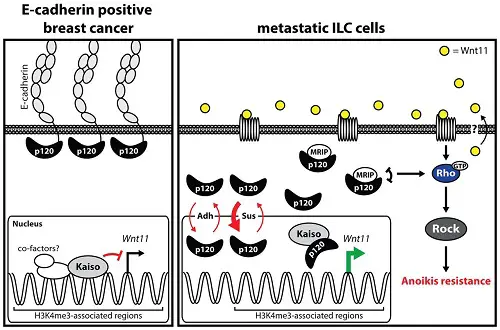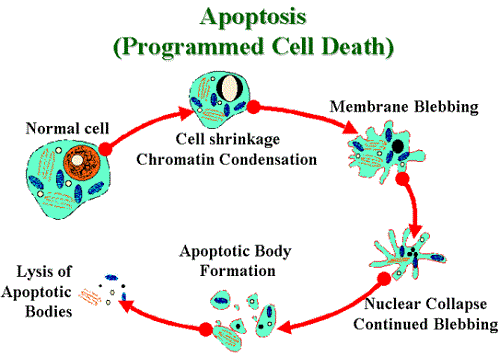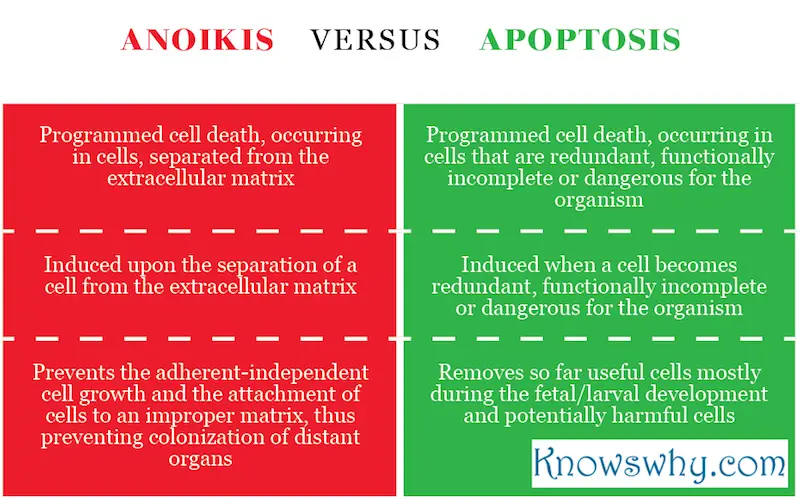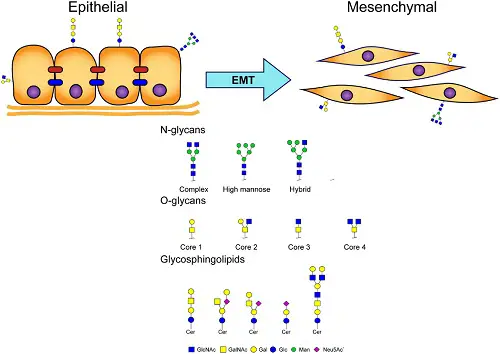What is Anoikis?
The anoikis is a type of programmed cell death (a particular type of apoptosis), induced upon the separation of a cell from the extracellular matrix. It is a mechanism, preventing the adherent-independent cell growth and the attachment to an improper matrix, thus preventing colonization of distant organs. The cells that are not attached to the extracellular matrix or are adherent to inappropriate tissue, undergo anoikis.
The Anoikis ensures tissue homeostasis and development. It is an important defense mechanism, preventing the re-adhesion of detached cells to new matrices and dysplastic growth.

Potential failure in the anoikis program may result in:
- survival of adherent cells under suspension conditions;
- proliferation at ectopic sites with different extracellular matrix proteins.
The failures in anoikis contribute to the formation of cancer metastasis in distant organs.
What is Apoptosis?
Apoptosis is a process of programmed cell death that occurs in the multicellular organisms. It represents a suicide of a cell, due to the interests of the multicellular organism. The cell shrinks, the nucleus compacts and breaks into pieces. The cell itself is also torn apart, with the cell membrane retaining its integrity. At the end, the residues of the cell are swallowed by the closest phagocytes.

The apoptosis is induced, when a cell becomes:
- redundant,
- functionally incomplete,
- dangerous for the organism.
Healthy and so far useful cells are destroyed mostly during the fetal/larval development. Some cells are not needed for the final appearance of an organ but are present in fetal/larval development. For example, human fingers are formed by apoptosis during the fetal development; the tadpole’s tail is subjected to apoptosis because it is not necessary for the adults.
Another reason for apoptosis have the cells with a defect, although compatible with life (cells with a severe defect undergo necrosis). The slightly damaged cells could repair, but it is possible to remain damaged, so they are eliminated. The defects may be, for example, DNA damage or improper spindle construction. Apoptosis of individual cells is therefore observed in all tissues where cell division occurs.
Apoptosis also removes potentially harmful cells, for example, infected with a virus.
Difference Between Anoikis and Apoptosis
1. Definition
Anoikis: The anoikis is a type of programmed cell death, occurring in cells, separated from the extracellular matrix.
Apoptosis: The apoptosis is a process of programmed cell death, occurring in cells that are redundant, functionally incomplete or dangerous for the organism.
2. Induction
Anoikis: The anoikis is induced upon the separation of a cell from the extracellular matrix.
Apoptosis: The anoikis is induced when a cell becomes redundant, functionally incomplete or dangerous for the organism.
3. Function
Anoikis: The anoikis prevents the adherent-independent cell growth and the attachment of cells to an improper matrix, thus preventing colonization of distant organs.
Apoptosis: The apoptosis removes so far useful cells mostly during the fetal/larval development; removes potentially harmful cells.

Summary:
- The anoikis and apoptosis are types of programmed cell death that occur in the multicellular organisms.
- The anoikis is induced upon the separation of a cell from the extracellular matrix. Cells that are not attached to the extracellular matrix or are adherent to inappropriate tissue, undergo anoikis.
- The anoikis prevents the adherent-independent cell growth and the attachment of cells to an improper matrix, thus preventing colonization of distant organs.
- The apoptosis is induced, when a cell becomes redundant, functionally incomplete or dangerous for the organism.
- The apoptosis removes so far useful cells mostly during the fetal/larval development and potentially harmful cells.
Author: Dr. Mariam Bozhilova
Dr. Mariam Bozhilova has a Master’s degree in Ecology and PhD in Botany. Her main professional interests are in the fields of ecology, biology and chemistry. She has more than 10 years of professional experience in scientific research and environmental consultancy.











Leave a Reply